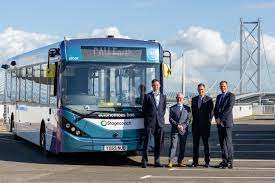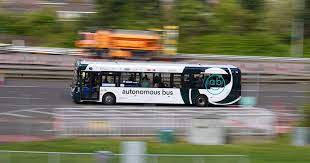UK launches first full-sized autonomous bus service with top speed of 50 miles per hour

London: The U.K.’s first full-sized autonomous bus service opened to the general public on Monday, with those involved in the project describing it as a milestone for the sector.
The AB1 service, as it’s known, travels on a 14-mile route in Scotland, between the Ferrytoll Park and Ride in Fife and Edinburgh Park Transport Interchange.
The route, which crosses the famous Forth Road Bridge, is able to carry as many as 10,000 passengers each week, according to public transport firm Stagecoach. A standard single adult ticket is priced at £7.20, or roughly $9.
In an announcement toward the end of last week, Stagecoach described the launch as an “important milestone for autonomous technology.” The company added that AB1 was “believed to be the first registered bus service in the world to use full sized autonomous buses.”
The trial, which is part of the CAVForth project, will run until the year 2025. A fleet of five buses will be involved, traveling in mixed traffic at speeds of up to 50 miles per hour.

The autonomous vehicles operate using a range of sensors and artificial intelligence, although a human safety driver is required at all times. Another member of staff will have responsibility for tickets and answer questions from those on board.
Alongside Stagecoach, the project’s partners are Fusion Processing; Transport Scotland; Bristol Robotics Lab; Alexander Dennis; the University of the West of England; and Edinburgh Napier University.
Some of its funding has come from the U.K. government’s Centre for Connected and Autonomous Vehicles.
In comments made last week, Paul Davies, president and managing director at bus manufacturer Alexander Dennis, appeared bullish about the prospects for autonomous driving going forward.
“We believe that automated driving systems like the one we are trialling in CAVForth will further improve safety by reducing reaction times,” he said.
Davies argued such systems would also offer “the ability to drive buses in a more efficient manner by optimising acceleration and deceleration to deliver significant energy savings and reduced wear and tear on the vehicle.”





